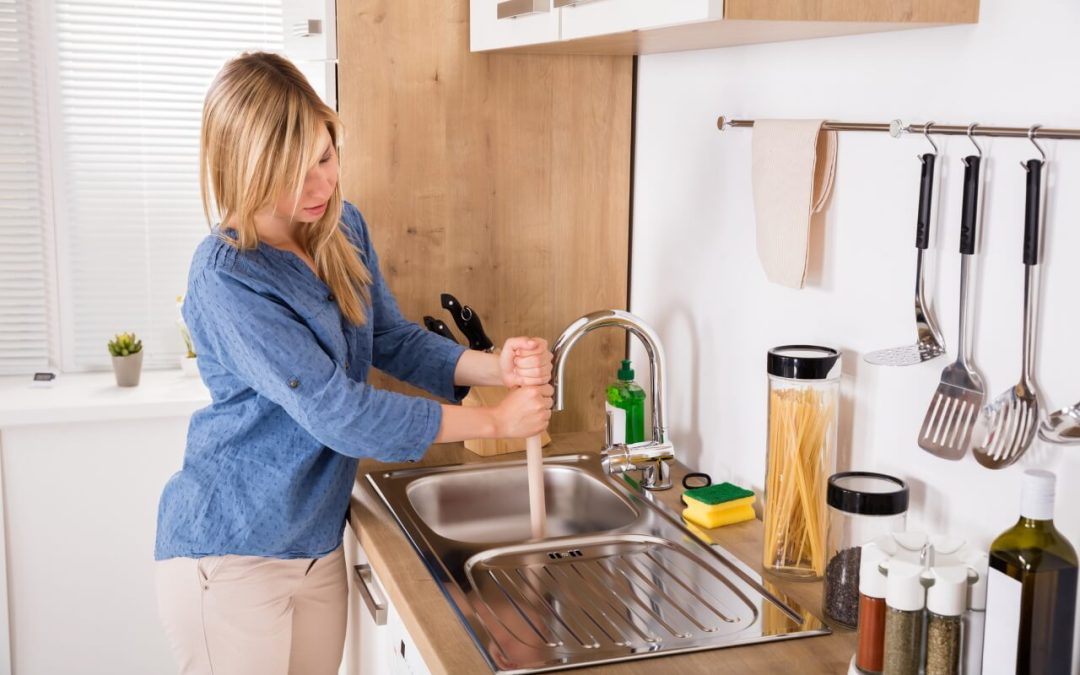
by mwonfor | May 19, 2023 | Community, Home Maintenance, Homeowners
Plumbing is an essential component of any home, and keeping it in good working order is critical to avoid costly repairs and potential water damage. Many homeowners may not realize the signs of a plumbing problem until it’s too late. Here is a list of common indications of a plumbing issue in your home.
Slow Drains are Common Signs of a Plumbing Problem
Slow drainage is one of the most common signs there’s an issue with your home’s plumbing. If your sink, bathtub, or shower takes longer than usual to drain, there is likely a clog in the pipe. Attempt to dislodge the blockage using a plunger or drain cleaner, but if the problem persists, you may need to call a plumber.
Strange Noises
Gurgling or bubbling sounds from the drains or pipes could indicate a problem with your home’s plumbing system. Gurgling may occur when water isn’t draining properly. Pipes that rattle are often due to loose brackets and fasteners. You may also hear noises caused by air trapped in the water lines.
Low Water Pressure
Low water pressure in the shower or sink could be due to a blockage in a pipe. Sometimes a leak in the main lines that bring water into your home will lead to low pressure throughout the house.
Water Discoloration
If the water coming out of the tap is discolored or has a strange odor, this could be due to rust, sediment, or even a problem with the water supply. When municipal sources supply your water, they usually update customers when problems occur and offer recommendations – such as a boil water advisory – for dealing with the situation. If your water comes from a well, have it tested to determine the cause of the discoloration.
Signs of a Plumbing Problem: Damp Areas or Water Stains
Dampness or water stains on walls, ceilings, or floors can indicate a leaking pipe. Leaks can cause significant property damage and contribute to mold growth in your home if left unchecked. Call a plumber to repair leaks right away.
High Water Bills
If you notice a sudden increase in your water bill, it could be due to a leak or other plumbing problem. A leaking pipe can waste a significant amount of water and cause utility costs to skyrocket.
Bad Smells are Signs of a Plumbing Problem
Unpleasant smells coming from your drains or pipes could be an indication of a clog. The bad odor is usually due to bacteria that thrive in stagnant water. Find the source of the smell and make repairs.
Knowing the signs of a plumbing problem can help you detect issues early and avoid costly repairs. Call a professional to address the concern immediately if you notice any of these indications in your home. You’ll prevent the damage from worsening and protect your investment.
American Home Inspection Services offers home inspections to customers in Southeastern Michigan. Contact us to request our services.
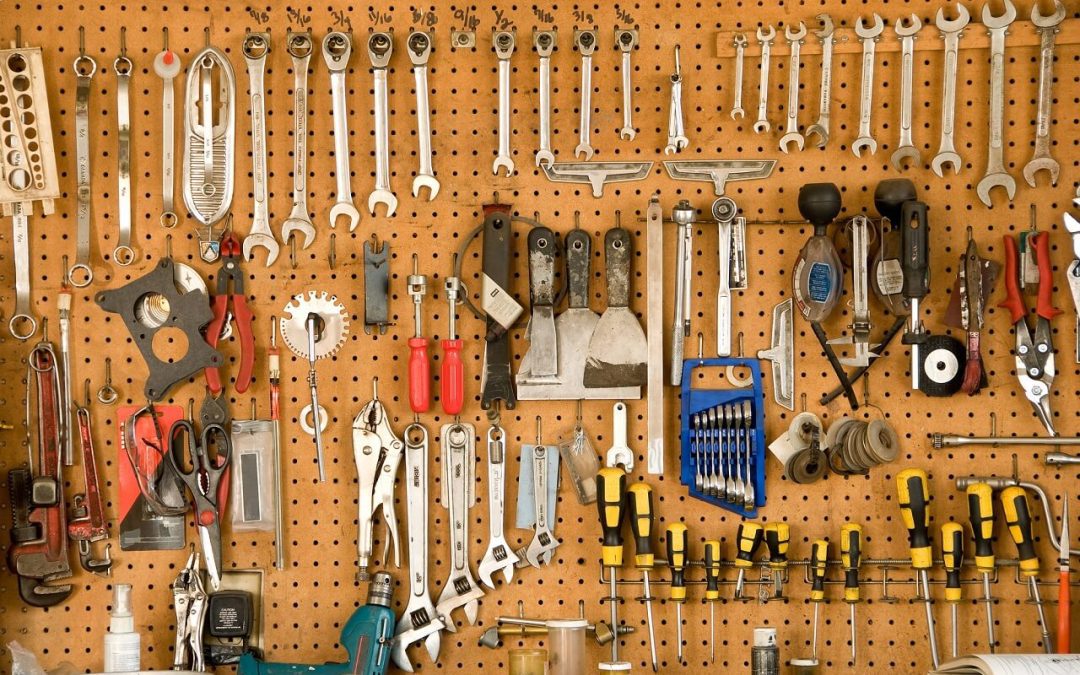
by mwonfor | Jan 19, 2023 | Home Improvement, Home Maintenance
When it comes to home maintenance, having the right tools is essential. Every homeowner should have a toolbox stocked with basic supplies that can be used for routine tasks and any unexpected repairs. It’s best to be prepared for any project that could come up around the house, from minor fixes to more significant projects. Check out these ten tools that every homeowner should have.
Claw Hammer
This is the classic tool for driving nails into wood and pulling them out. The claw can remove any unwanted nails or other objects from walls. Look for a hammer with a sturdy handle that feels comfortable in your hand.
Essential Tools Every Homeowner Should Have: Screwdrivers
You’ll need flathead and Phillips head screwdrivers for tightening screws and bolts. Be sure to get a variety of sizes so you have the right one for any job.
Cordless Drill
This power tool can make quick work of any task that requires drilling holes or driving fasteners, such as hanging a shelf or installing new hardware. Look for one with variable speeds and buy multiple drill bits to cover all your needs.
Pliers are Tools Every Homeowner Should Have
Pliers are indispensable when you need to twist, turn, or hold objects. Look for a good set that includes different types of pliers, like needle-nose pliers and tongue and groove pliers. Use one with insulated handles for any electrical work.
Adjustable Wrench
This is the perfect tool for loosening and tightening nuts and bolts. An adjustable wrench can be used in tight spots where you need extra leverage. While a set of wrenches will give you more precise control over your work, an adjustable wrench will cover most of your basic home needs.
Level
This is a must-have tool for any home project that requires accuracy, such as hanging pictures or building shelves. A level will help ensure your work is straight and level every time. Longer levels will give you a more precise measurement than the shorter ones, and if you’re into gadgets, look into laser levels for high-tech leveling solutions.
Utility Knife
A sharp utility knife can cut through almost anything, from cardboard to carpeting. Look for a knife with a comfortable grip and replaceable blades so you always have a sharp edge when needed.
Tape Measure
Accurate measurements are essential when accomplishing most home projects, from building furniture to painting walls. Get a good retractable tape measure that’s easy to read and measure in both standard and metric units.
Underrated Tools Every Homeowner Should Have: Stud Finders
This is a must-have tool for anyone who wants to tackle wall repairs or hang heavy items like mirrors and cabinets. A stud finder will help you locate the studs in your walls so you can fasten objects securely without damaging your wall.
Flashlight
Having a good flashlight around will make any job easier, especially when you need to look inside walls or find something in a dark corner. Get a lightweight flashlight that’s easy to hold and has adjustable brightness settings so you can see clearly in any situation.
These tools will help ensure you’re prepared for anything that comes up around the house. Stock up your toolbox, and you’ll be ready to tackle any home project that comes your way.
American Home Inspection Services provides inspection in Southeast Michigan. Contact us to schedule an appointment for our services.
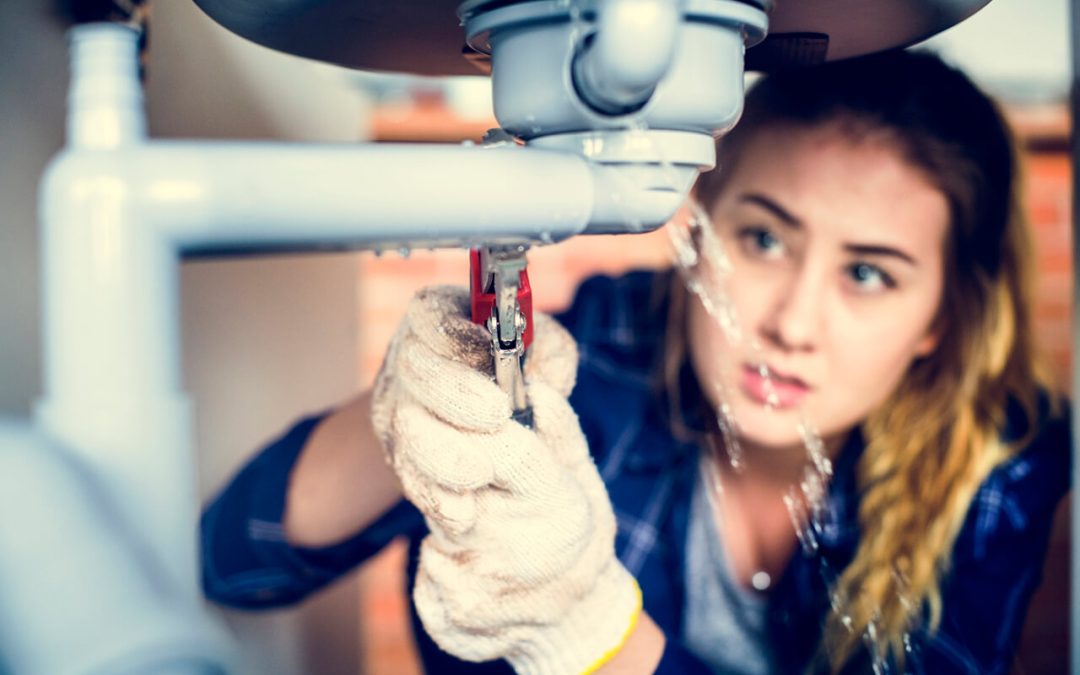
by mwonfor | Dec 21, 2022 | Community, Home Maintenance, Homeowners
Plumbing problems can be a major hassle for any homeowner, not to mention costly if you have to call out a professional. Fortunately, you can address many common plumbing issues with basic DIY know-how and the right tools. Check out these five DIY plumbing fixes to get you started.
DIY Plumbing Fixes: Clearing a Clogged Drain
A clogged drain is one of the most common plumbing issues. If water isn’t flowing down your drain, you may have a clog caused by hair, soap scum, or other debris. To fix it, you’ll need a plunger and some elbow grease. First, ensure the tool is fully submerged in water, then push and pull the plunger in a vertical motion to create suction and pressure to clear the clog.
Repairing Leaky Faucets
Dripping faucets are a significant source of wasted water—not to mention the constant “drip, drip” driving you crazy. You’ll need basic tools like a wrench and adjustable pliers to fix a leaky faucet.
Start by turning off the water supply and opening the faucet handles to release any remaining pressure. Then, remove the faucet handle and locate the screw on the handle. Once you have access to the valve stem, replace any corroded or worn parts. Reassemble everything and turn on your water supply to test for success!
DIY Plumbing Fixes: Replacing a Toilet Flapper
A leaking toilet tank might be due to an old or worn-out flapper, the rubber stopper that prevents water from flowing from the tank to your bowl. You’ll need a replacement flapper and pliers (or an adjustable wrench) to replace it.
Start by shutting off the water supply and draining any remaining water from the tank. Then, unhook the chain connecting the handle and remove the old flapper. Install the new one and reattach the flush handle chain, ensuring it’s not too tight or loose. Turn your water supply back on and test to make sure there’s no more leaking!
Installing a New Showerhead
Replacing an old showerhead is surprisingly easy. You’ll need a pair of pliers and some pipe tape. Start by removing the old showerhead. Clean pipe threads with a wire brush and wrap them in pipe tape for extra security. Finally, attach your new showerhead and turn on the water to test it out.
Replacing a Toilet Fill Valve
If your toilet isn’t filling up correctly, you may need to replace the fill valve. You’ll need basic tools like an adjustable wrench, a screwdriver, and possibly some plumber’s putty or Teflon tape.
First, shut off the water supply to the toilet and drain any remaining water in the tank. Then, remove the old fill valve and replace it with a new one. Reattach all hoses and use the plumber’s putty or Teflon tape, if necessary, to form a watertight seal. Turn your water supply back on and test for success!
These simple DIY plumbing fixes should help you tackle some of your home’s most common plumbing issues. If your problem is more than you can handle, don’t hesitate to call a professional plumber to make repairs.
American Home Inspection Services provides inspection in Southeast Michigan. Contact us to schedule an appointment for our services.

by mwonfor | May 26, 2022 | Community, Home Maintenance, Homeowners
If your home feels disorganized and cluttered, you may feel more stressed than usual. It’s hard to relax and unwind when it seems there is always something to clean up. Here are a few tips to help you reorganize your house. You’ll create functional and tidy living spaces.
Prioritize the Most Pressing Projects
Make a checklist of the areas that need to be organized. Determine the most important room, closet, or space to organize and start there. Having a plan before beginning your decluttering and organization work is helpful. Create a list of cleaning products or storage containers you’ll need to complete the job.
Lighten the Work Load to Reorganize Your House
Before reorganizing, do a sweep of each space and purge items you don’t want or need. Don’t hold on to things that no longer serve you. Gather useful items in cardboard boxes and donate them to a charity of your choice next time you run errands. There is no point in spending time organizing things you don’t need.
Budget Your Time
Use a chore chart or calendar to schedule time for cleaning each area in your home. Try to estimate the amount of time you’ll need and put it on the calendar. If you only have 15 minutes, clean a single kitchen drawer. A free weekend may be enough time to reorganize the garage.
As you complete an area, check it off the list. Seeing your progress is often an incentive to continue the work of decluttering and organizing.
Store Items Appropriately to Reorganize Your House
Make sure things are stored where they belong. It doesn’t make sense to store your bed sheets in a cabinet above the refrigerator. Don’t keep extra bottles of dishwashing liquid in your bedroom closet. You are more likely to put things where they belong and find things when you need them if your organizational system is logical and convenient.
Use Vertical Space
You’ll save floor space by getting creative with your storage. Use over-the-door shoe racks, hanging organizers, hooks, and pegboards. Especially if you have a smaller home, making use of vertical space helps you preserve square footage and keep your living areas open.
Clean As You Reorganize Your House
When you declutter and organize, this provides a perfect opportunity to dust the bookshelf and wipe fingerprints off the coffee table. When reorganizing an area, remove everything and clean the space. Wipe the walls, dust surfaces, and make repairs if needed. You’ll be able to organize and store your belongings in a clean room.
Maintain the Organization
Just as important as organizing your whole house is maintaining the organization. After the entire home is organized, upkeep is easy. Set aside 15-20 minutes per day to put things back where they belong. Use labels on boxes, bins, and totes, so your family members know exactly where things go. Your house will stay organized, and you’ll feel less stress when you’re at home.
American Home Inspection Services offers inspections to homebuyers and sellers in Southeast Michigan. Contact us to request an appointment.
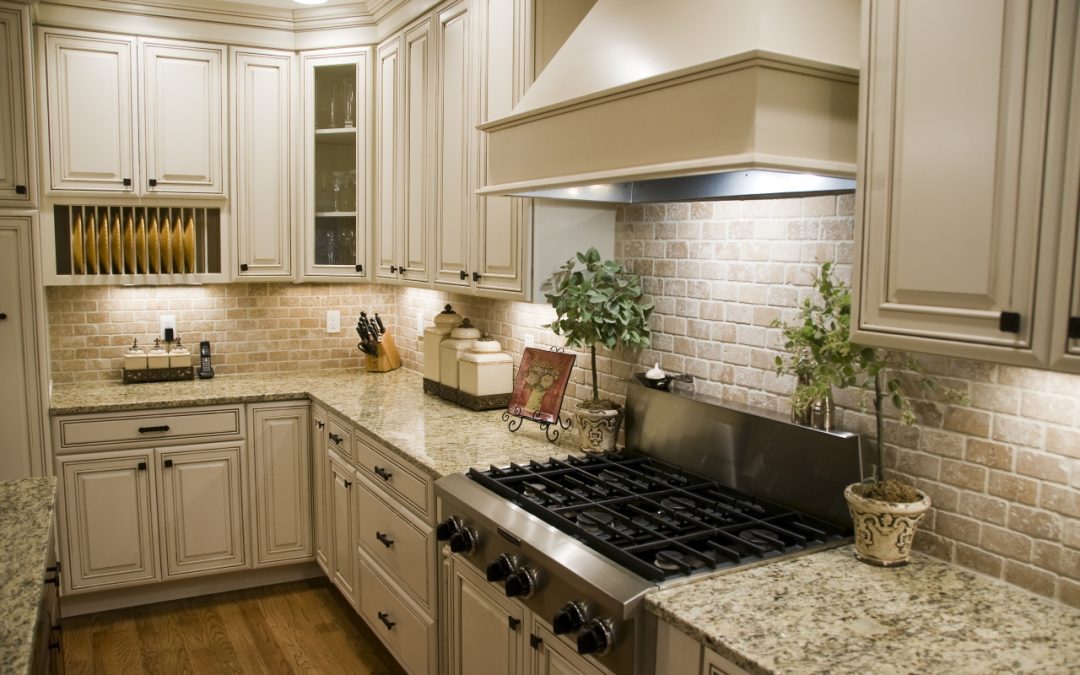
by mwonfor | Mar 4, 2022 | Community, Home Maintenance
Having a small kitchen doesn’t mean sacrificing style or functionality. If you’re unsure how to make the most of your tiny kitchen, here are some suggestions. There are many clever ways to manage your compact food preparation area, with space-saving techniques and innovative design ideas for small kitchens.
5 Space-Saving Ideas for Small Kitchens
These five space-saving hacks will get you started creating a more functional kitchen that looks trendy and is an enjoyable space to prepare your meals.
Use More Wall Space
While you may be limited to the number of cabinets and drawers you can have, you most likely have lots of empty wall space where you can store your utensils. One of the most accessible ideas for small kitchens is to mount hooks on the wall where you can hang your bulky pots and pans. This hack could save you a whole cabinet’s worth of space and make your cooking tools much easier to access, too.
Install an Island
You may assume a stylish kitchen island is not an option when you have a tiny kitchen, but this is not necessarily the case. Kitchen islands are a very efficient space storage system and double up as a breakfast bar. If you have no space for a dishwasher along the walls, run power and plumbing to your kitchen island and install one there.
Remove the Kitchen’s Door
If your kitchen is a separate room, it may feel claustrophobic being a space so small. However, you don’t have to knock down the walls to solve this problem. Instead, you might find that simply removing the door is enough to open the room up and give it a more spacious feel.
Use Larger Floor Tiles
Many people assume that small tiles work better in compact rooms, but this is not the case. Instead, larger tiles give an illusion of a bigger space, plus there are fewer grout joints to clean. Therefore, we suggest choosing large tile size for smaller kitchens.
Use Collapsible Furniture in Small Kitchens
One of the most efficient ideas for small kitchens is to use collapsible furniture. While this might not sound like the most stylish idea, nowadays, there are tons of trendy collapsible tables that can help you maximize the use of your space.
This type of furniture is super beneficial for small kitchens that double up as dining rooms. If you don’t have the space to have a dining table out at all times, an extendable one will allow you to fold it down when it’s not needed.
American Home Inspection Services provides inspections to customers in Southeast Michigan. Contact us to schedule our services.
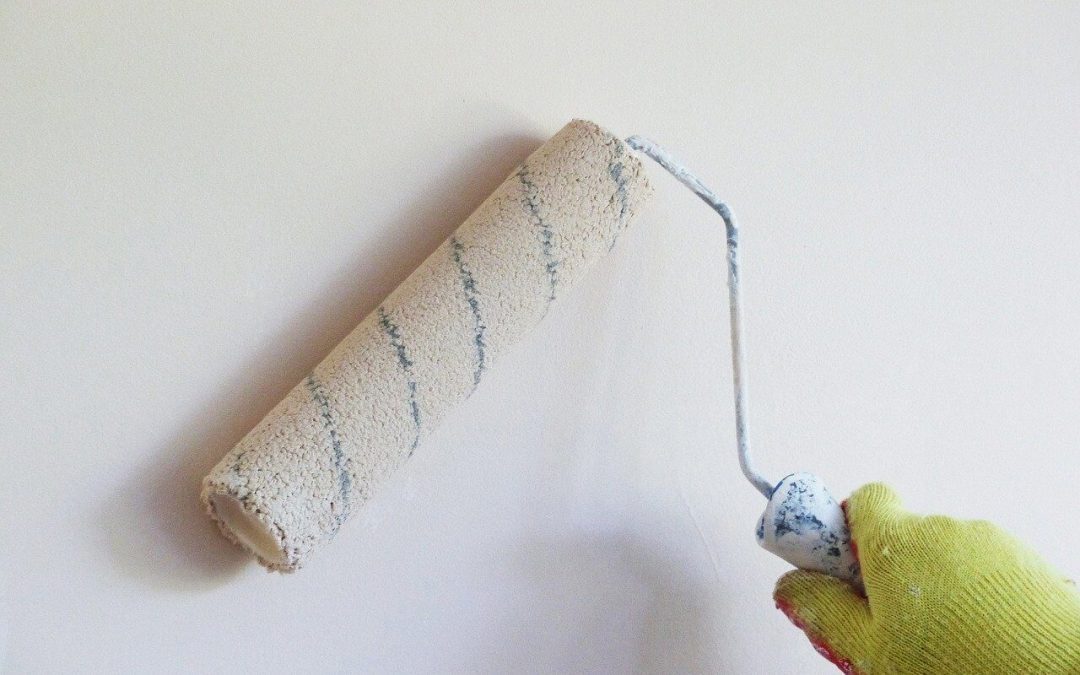
by mwonfor | Feb 7, 2022 | Community, Home Maintenance, Homeowners
If you enjoy updating your living spaces, here are a few ideas for DIY home improvement. Customize your home and boost its functionality inside and out with these projects.
Add Color with Paint
Whether you choose to paint the trim, doors, or the entire room, painting is a DIY home improvement that can completely change your environment. If you want to add color to complement the furniture or the walls, paint the trim or crown molding in the room. To make your home stand out in your neighborhood, paint the front door a bold new color.
You’ll find sample cards at your local home improvement store so you can compare colors with the furniture and décor of your home. To make a room seem larger, use lighter colors such as a cool grey, taupe, or white. Lighter colors also make a room feel brighter, enhancing natural light from the windows.
DIY Home Improvement: Storage
It can feel like there is never enough storage space in most homes. Install floating shelves, build an entryway bench, and use furniture that has cabinets and drawers built-in.
You can customize shelving to fit the nooks and crannies around your home. Organize the mudroom with a bench, cubbies, and hooks to store umbrellas, jackets, hats, and car keys. Purchase or construct furniture that can be used as additional storage. You can find plans for ottomans, benches, and window seats that open so blankets, magazines, and children’s toys can be stashed inside.
Personalize Outdoor Spaces as Part of Your DIY Home Improvement
If you have a patio or a deck, this is a great space to test your DIY skills. Sand the wooden decking boards and apply a fresh coat of paint or stain. If you notice boards that are warped or rotting, replace them.
Another idea to improve your outdoor space is to build a pergola. This is a simple structure that adds shade over a deck or patio. It provides a place to relax on warm, sunny days. Pergola kits are available online or at your local home improvement store. These structures are easy to build, and the kits include thorough instructions.
Water Filters
Installing a water filter is an easy project to promote wellness at home. A filter provides clean, refreshing water and reduces plastic bottle waste. You can install water-filtration systems under the sink or directly onto the faucet. The most accessible style of filter is a simple pitcher that removes contaminants and can be stored in the refrigerator. These are inexpensive and effective and don’t require installation.
American Home Inspection Services provides inspections to customers in Southeast Michigan. Contact us to schedule our services.






